Primary Open Angle Glaucoma
This is one of the most types seen, wherein the drainage of the aqueous humor from the eye is affected due to poor functioning of the trabecular meshwork. These patients usually present around the age of 40-50 years and have a raised IOP.
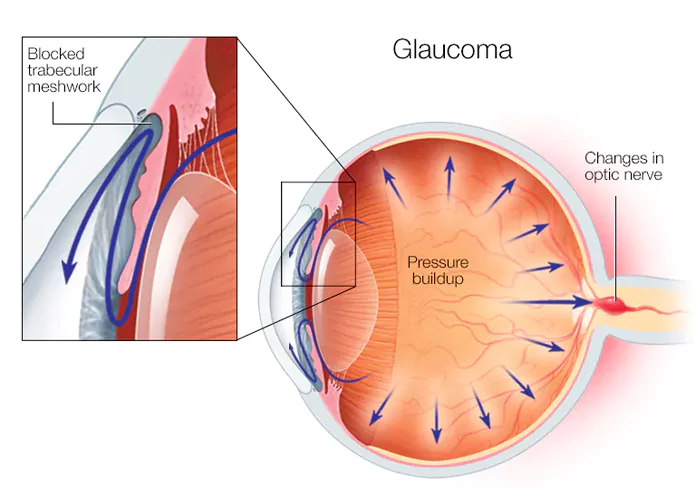
Diagnosis
Visual field analysis by perimetry
The perimetry test is the gold standard test to assess the field of vision in a patient and is usually the first step before initiating Glaucoma Treatment. Not only does it help in assessing the extent of damage, but also helps in monitoring the progression of the disease as well as the efficacy of Glaucoma Treatment.
The test consists of a series of lights projected into the patient's eyes. The patient acknowledges the presence of these lights by pressing a trigger. The sensitivity of the visual system is thus checked for every point on the visual field by the perimeter. The perimetry test usually takes around 20-30 minutes and requires the patients to be alert and co-operative.
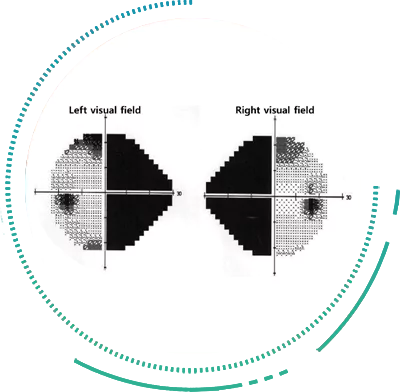
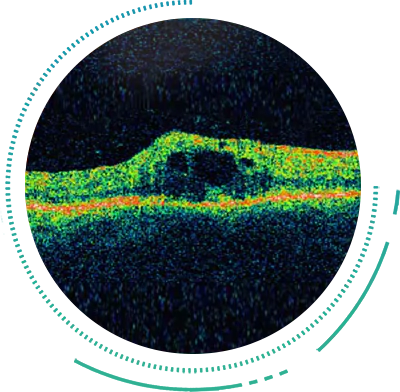
Optical Coherence Tomography
The optical coherence tomography is a non-invasive imaging technique that measures the thickness of the retinal nerve fiber layer around the optic nerve. The thickness of this layer is reduced in patients with Glaucoma. The test is also helpful in understanding the progress of the disease and the effect of any Glaucoma Treatment.
Glaucoma Treatment options
The damage of the optic nerve due to glaucoma cannot be reversed, hence early detection is extremely important for reducing the extent of damage. Glaucoma Treatment modalities for aim to prevent futher progression of the optic nerve damage. The primary goal in Open Angle Glaucoma Treatment is to reduce the IOP to a target level [that is determined by your Eye Doctor] that does not damage the optic nerve. This target IOP level may be changed periodically based on the extent of nerve damage as assessed by the diagnostic tests.
Medical Management
This is the first choice method for Glaucoma Treatment. Eye drops for Glaucoma which reduce the IOP are prescribed to patients and these will have to be used regularly without fail to keep the IOP at target levels. The eye drop for Glaucoma is not actually a single entity. It is a group of molecules that are collectively classified into the broad category of "eye drop for Glaucoma" which are used in Glaucoma Treatment.
A single molecule or a combination of molecules in the preparation is usually used and the pressure is checked periodically once the Glaucoma Treatment is started to ensure it has reached the target level. An additional eye drop for glaucoma may also be prescribed if the IOP does not come under control for these patients using drops for Glaucoma Treatment.
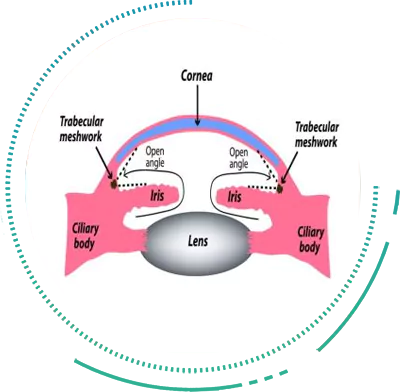
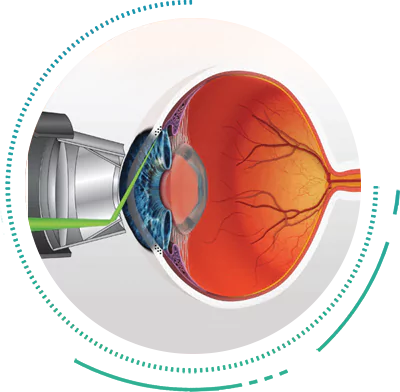
Glaucoma Laser Surgery
Glaucoma Laser Surgery include the procedures of Laser Trabeculoplasty [SLT or ALT] and is a type of Glaucoma Treatment performed in patients in whom the eye drops are not effective enough to bring the IOP under control, or in patients in whom the number of eye drops used needs to be reduced. Glaucoma Laser Surgery can also be used in combination with eye drops to supplement the effectiveness of the Glaucoma Treatment.
Laser Trabeculoplasty is not a major Glaucoma Surgery. It is performed in the outpatient department as a Glaucoma Treatment without needing admission for any surgical procedure. The Glaucoma Laser Surgery procedure is performed under topical Anaesthesia without the need of any painful injections. After this, your Glaucoma Specialist will monitor your IOP and decide on the efficacy of the Glaucoma Laser Surgery and may or may not choose to add an eye drop for glaucoma if the IOP has not reached its target as per the Glaucoma Treatment protocol.
Trabeculectomy
Trabeculectomy is a Glaucoma Surgery to reduce the IOP in the eyes. An opening is created in the wall of the eye which drains the excess aqueous humor from the eyes, thus reducing the IOP. Trabeculectomy is usually reserved for advanced cases of glaucoma where the damage to the optic nerve is severe.
It is also advocated in cases wherein the IOP has not been brought under control either through eye drops or through Laser Trabeculoplasty. Trabeculectomy may also be combined with Cataract Surgery to aid in further reduction of the IOP.
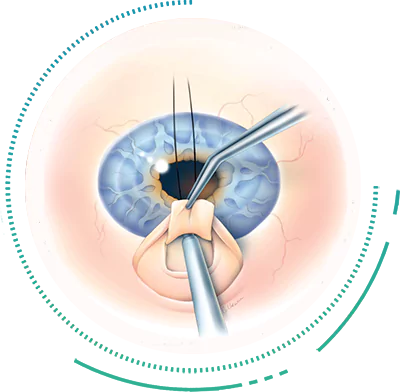
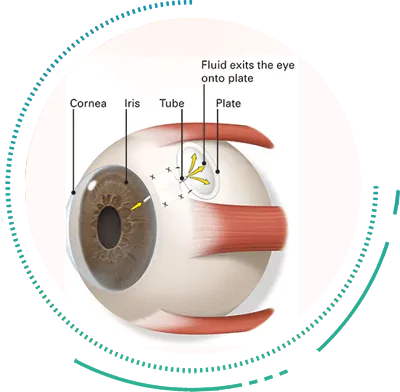
Implantation of Shunts
Shunts are medical devices for Glaucoma Treatment implanted inside the eye which control the amount of aqueous humor that is drained from the eye. Implanting these shunts requires a surgical procedure. This Glaucoma Surgery ensures a very controlled reduction of the IOP. The shunts used in Glaucoma Surgery can be either valved or non-valved.
Valved shunts are usually preferred in the surgical procedure since they regulate IOP precisely and also ensure only one way movement of the aqueous from the eye. Shunts are also the surgical procedure of choice for Glaucoma Surgery used in cases where simple Trabeculectomy Glaucoma Surgery has failed or has a high chance of failure.

